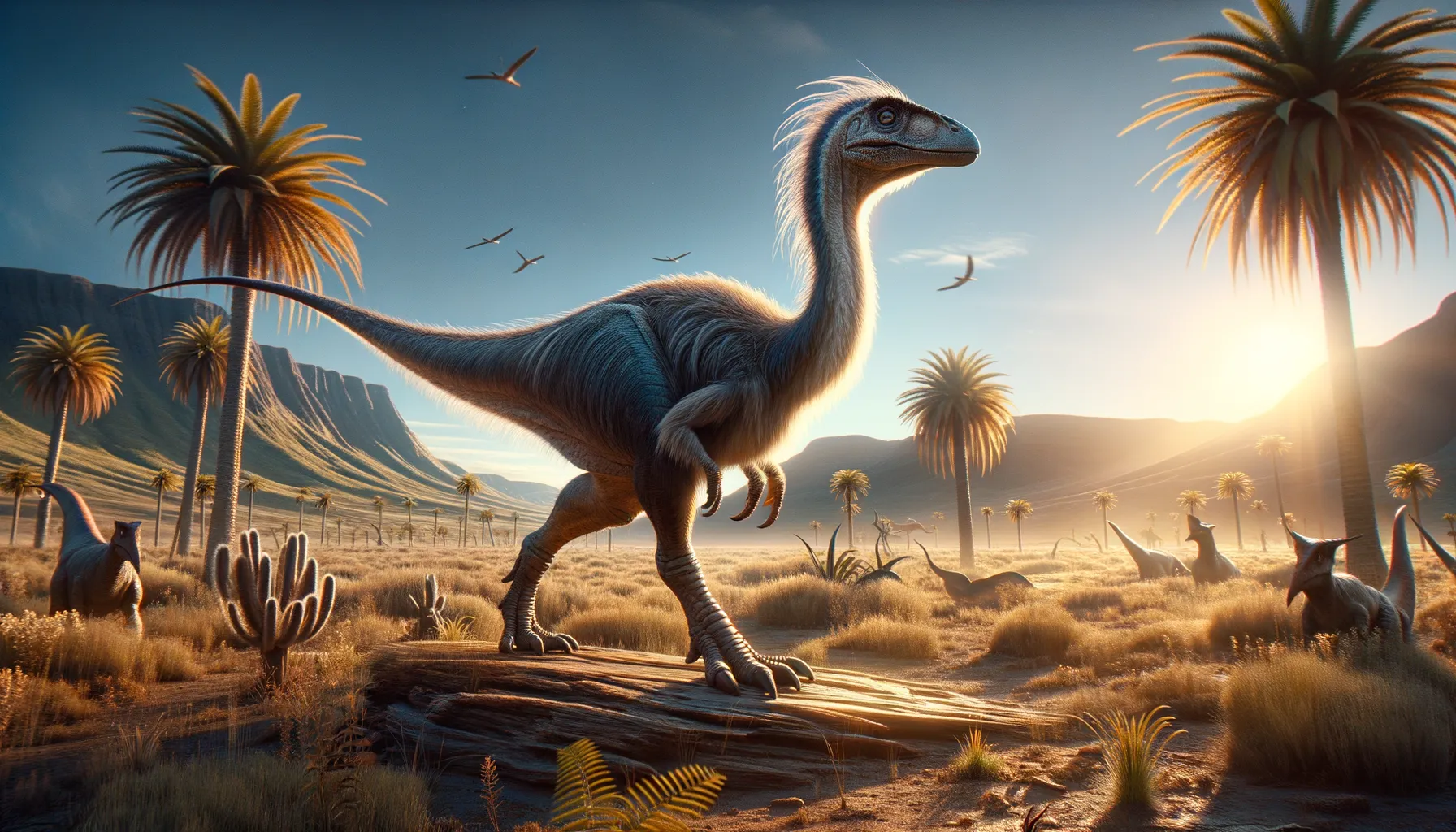
Arkansaurus
The swift-footed relic of Arkansas.
Period
Cretaceous
Length
Roughly 3 meters from snout to tail.
Height
Up to 2 meters tall including head.
Weight
Approximately 50-70 kilograms.
Arkansaurus was a small, bipedal dinosaur that roamed the lands during the Early Cretaceous period. This theropod is believed to have been part of the ornithomimosaur family, which resembled modern-day ostriches. Known from partial fossil evidence, it is characterized by its bird-like feet and lightweight structure, which aided its mobility and agility. Though only partial discoveries have been made, it is considered significant in the study of North American dinosaurs.
Diet
Arkansaurus was likely omnivorous. It probably consumed a variety of plants and small animals or insects, taking advantage of the resources available in its environment.
Hunting
Its hunting behavior might have included foraging for small prey. Its speed and agility would have been advantageous for catching insects or small vertebrates in its forest habitat.
Environmental challenges
Arkansaurus lived in a time when the environment included diverse ecosystems, such as forests and river valleys, which presented varying challenges. Seasonal changes and variations in resource availability would have required adaptability. Potential threats from larger predators or competition for food resources were common challenges faced by many species during the Cretaceous period.
Speed
Capable of moderate speed, useful for evasion.
Lifespan
Estimated to live around 20-30 years.
First discovery
Discovered in 1972 by Joe B. Friday in Arkansas, USA.
Fun Facts
- Arkansaurus was named after the U.S. state of Arkansas, where its fossils were found.
- This dinosaur lived during the Early Cretaceous period, about 113 million years ago.
- Arkansaurus is part of the theropod group, which means it was a bipedal carnivore or omnivore.
- The creature is believed to have been a fast runner, thanks to its long legs.
- The discovery of Arkansaurus fossils helped fill a gap in the fossil record for southeastern North America.
- Arkansaurus is known primarily from its foot bones; its full appearance is still partly a mystery.
- It was officially named and described as a new species in 2018.
Growth and Development
Arkansaurus's growth involved transitioning from a hatchling to a fully developed adult, with significant changes in size and structure. As was typical for theropods, the young would have been quite vulnerable and reliant on parental protection, if applicable. The development process would have involved not just growth in size, but also the development of key features like its long legs and bird-like feet.
Habitat
Arkansaurus is thought to have lived in forested areas with an abundance of flora. The habitat likely included a mix of open spaces for running and areas with dense vegetation. Proximity to water sources such as rivers or lakes would have been essential for sustenance and survival.
Interaction with other species
Arkansaurus may have interacted with various other dinosaurs and animals coexisting in its ecosystem. These interactions could include competition with other species for food. Its small size might have placed it lower in the predatory hierarchy, requiring it to be cautious of larger carnivores.
Natural lifespan
Arkansaurus had an estimated natural lifespan of 20-30 years.
Reproduction
Reproductive behaviors would have included laying eggs, as with other theropod dinosaurs. The care for the young may have involved guarding the nest and possibly feeding the hatchlings until they were able to fend for themselves.
Social behaviour
The social behavior of Arkansaurus is largely speculative but might suggest group dynamics during certain activities such as foraging. Its comparative size and speed suggest that it could have benefitted from some form of group living for protection against predators.
Fossil locations
Fossil evidence of Arkansaurus has been primarily discovered in the state of Arkansas. The initial discovery included parts of the foot, which provided critical insight into its classification. Continued research in the same region might provide more comprehensive fossil data.
